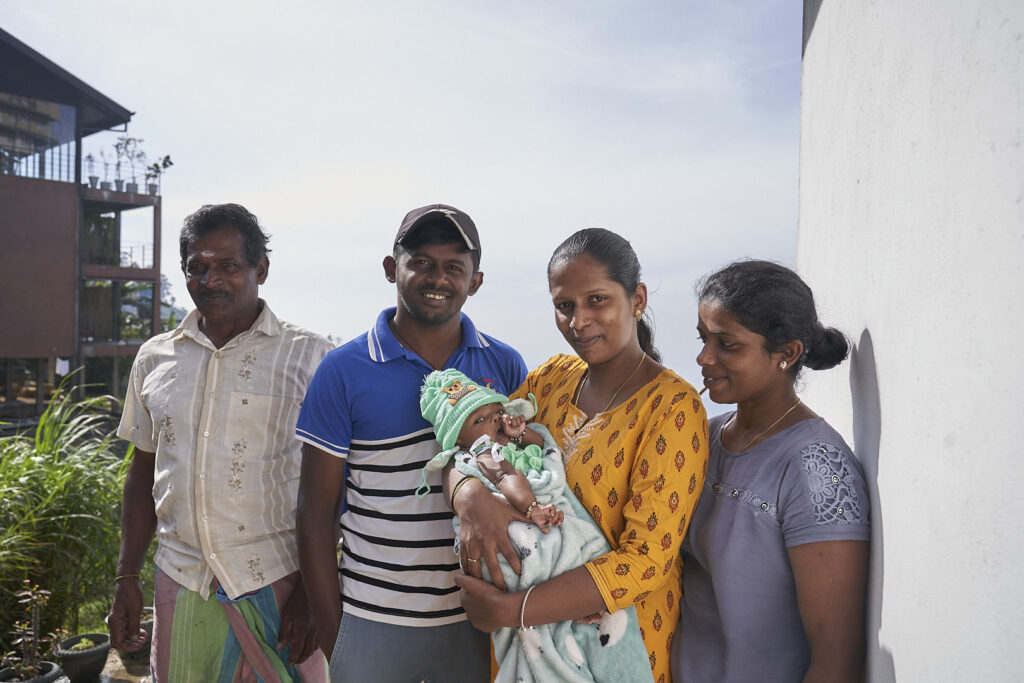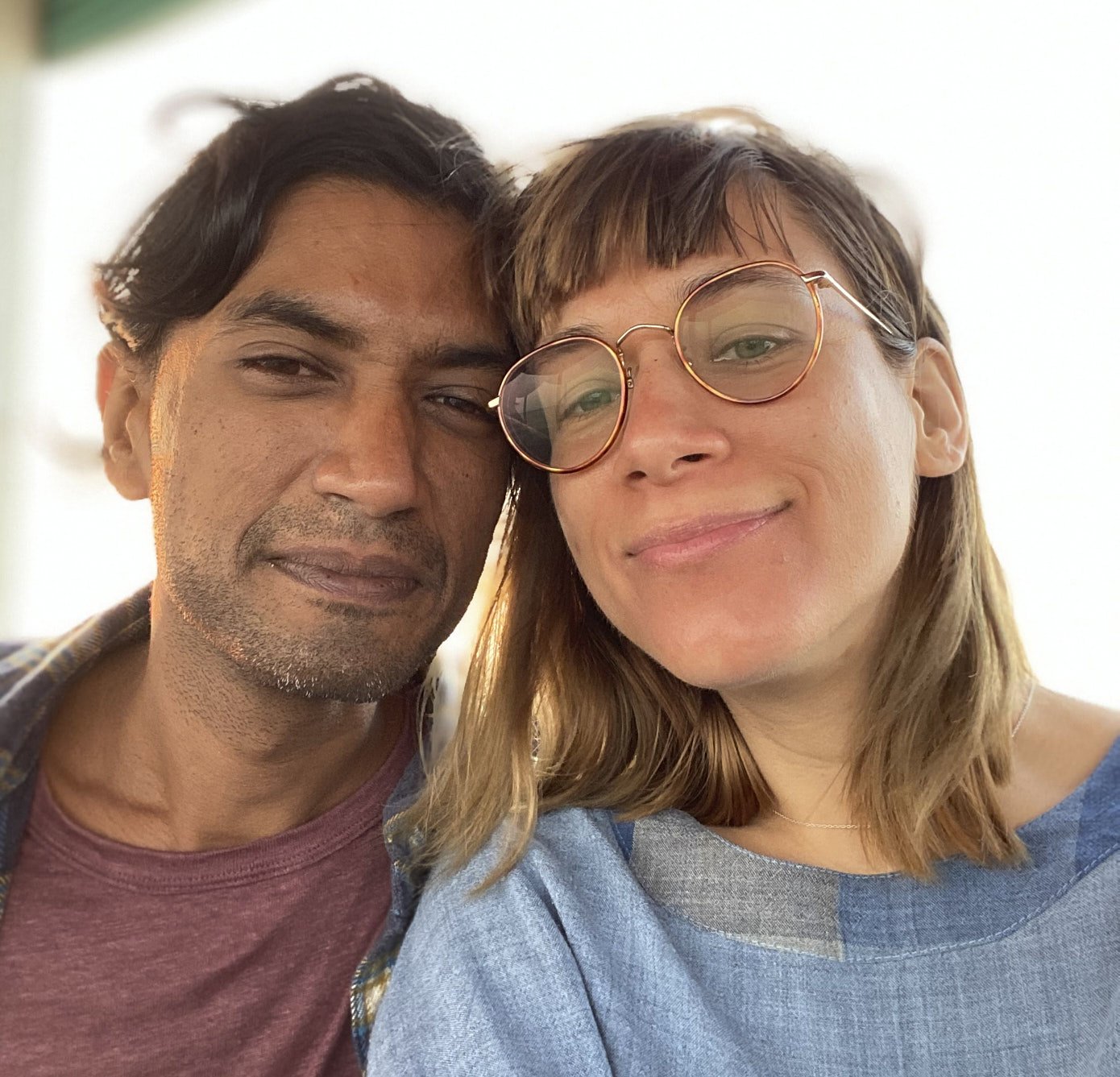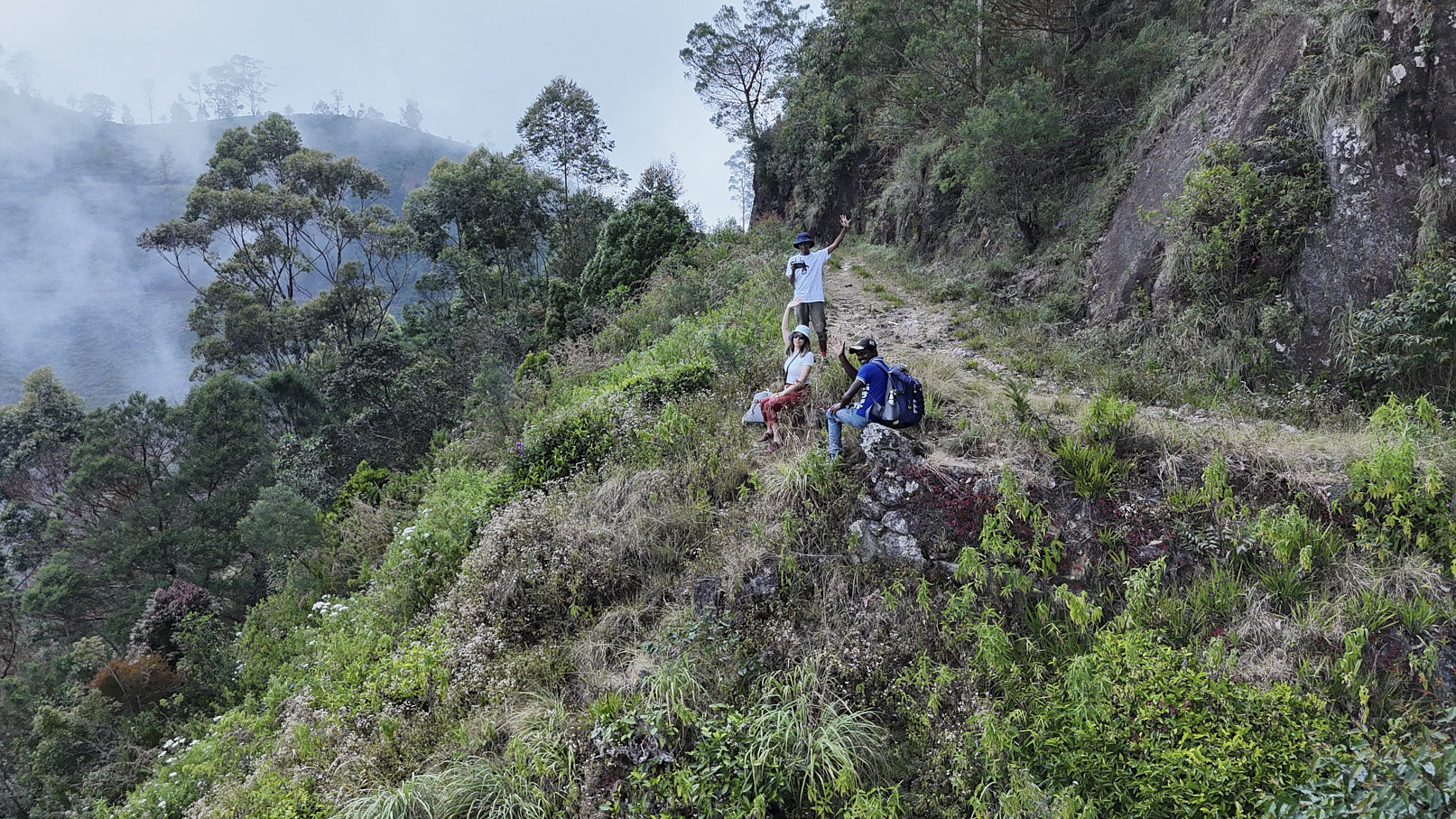
Walking is man’s best medicine. Besides promoting physical and mental well-being, walking while traveling offers another benefit, allowing for a slower travel pace and deeper connection with the destination, and providing a unique perspective on the local culture and scenery. As well as encouraging inimitable connection we also want to reduce reliance on fossil fuel-powered vehicles when it’s possible in our tours.
So, we decided to include some parts of the Pekoe Trail into our tours. The Pekoe Trail is a 323-kilometer long-distance walking trail through the enchanting Central Highlands of Sri Lanka, recognised as a UNESCO World Heritage area. It is divided into 22 stages – you will walk through most breathtaking mountain landscapes, lush tea plantations, and diverse ecosystems. Along the way, you’ll encounter vibrant local communities, each offering a glimpse into Sri Lanka’s rich traditions, warm hospitality, and unique cultural heritage, making the experience as meaningful as it is adventurous.

“We selected Haputale for our tours as it serves as a connecting point for two stages of the Pekoe Trail, offers access to many other hiking areas including Horton Plains, and is well connected by transport links such as the Kandy–Ella train and nearby highways.”
We drive to Haputale for our 2-day adventure where we meet Dushantha, shortly Dusha. He will guide us through “off the beaten path”.
Here the elevation is 1431m above sea level. Haputale is surrounded by hills covered with cloud forests and tea plantations. The town has a cooler climate than its surroundings, due to its elevation. The Haputale pass allows views across the Southern plains of Sri Lanka. The South-West boundary of Uva basin is marked by the Haputale mountain ridges, which continue on to Horton Plains and Adam’s Peak to the west.
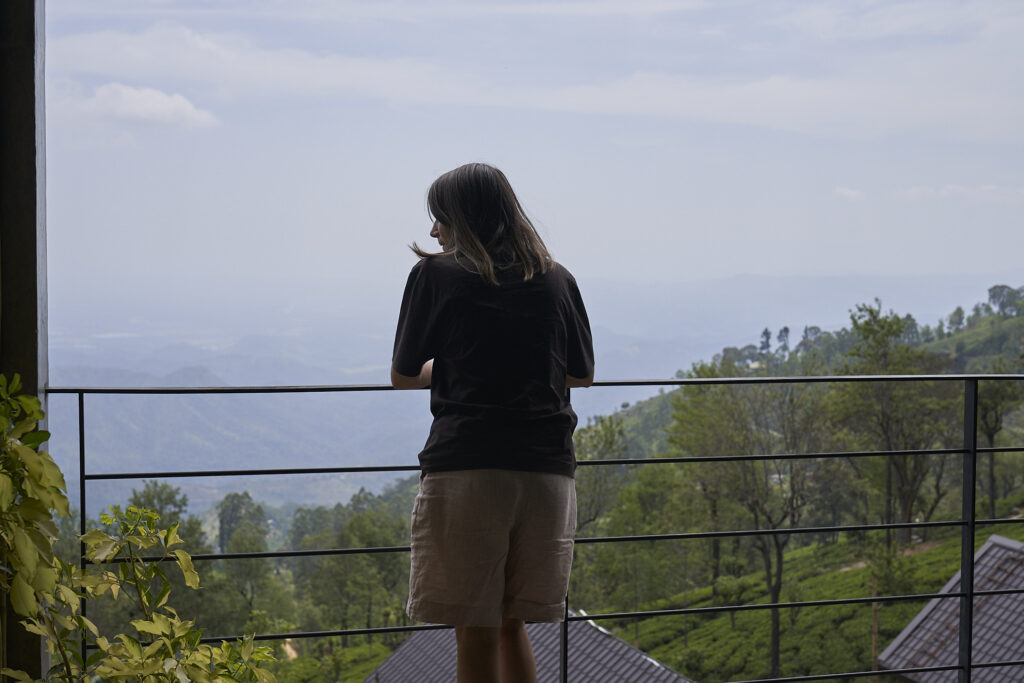
Vantage Hills, Haputale
Located in Haputale, 27 miles from Gregory Lake
Dhusha meets us at Vantage Hills where we are staying for the night. Before we start the walk he wants to take us to his house, very close by. He tells us that they prepared lunch for us. His two sisters cooked delicious food for us. We are absolutely thrilled by their hospitality and easy going energy, we instantly connect.
After lunch we finally start our walk: Pekoe Trail Stage 13 – Haputale to St. Catherine
First we walk to Haputale town, then we walk through a forest to enter working tea plantations. All the way through Dhusha teaches us what he knows about plants, flowers, and of course, tea. He was born and raised here as a son of a tea plucker so this place is what he knows the best. He surprises us with his knowledge of each plant you can find here. You can sense in his voice that he is excited to introduce us to the nature and people of this area.
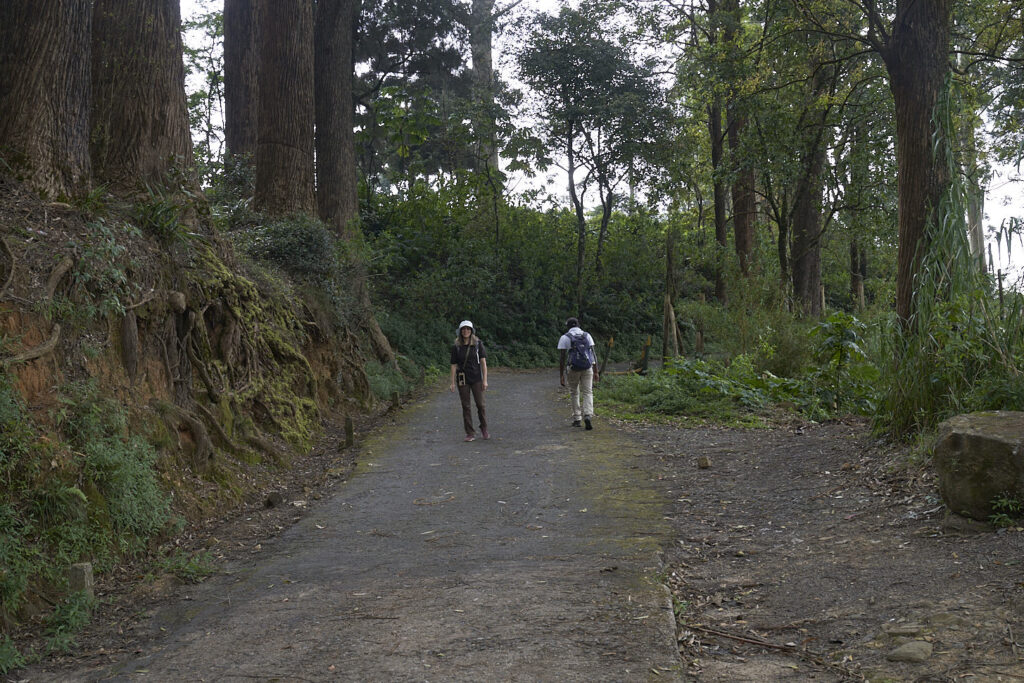
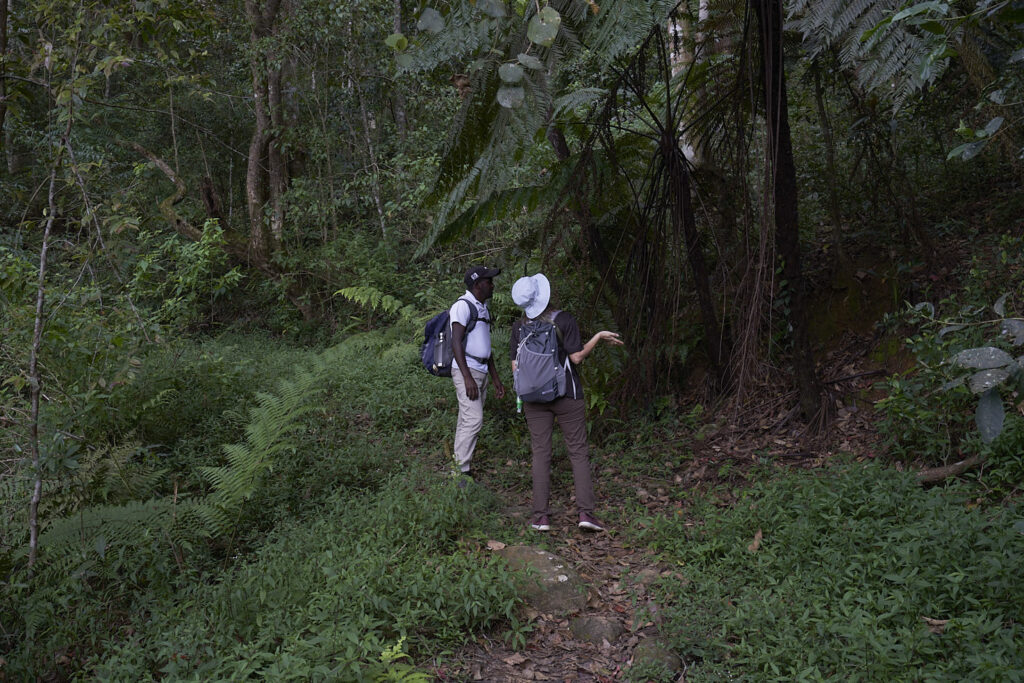
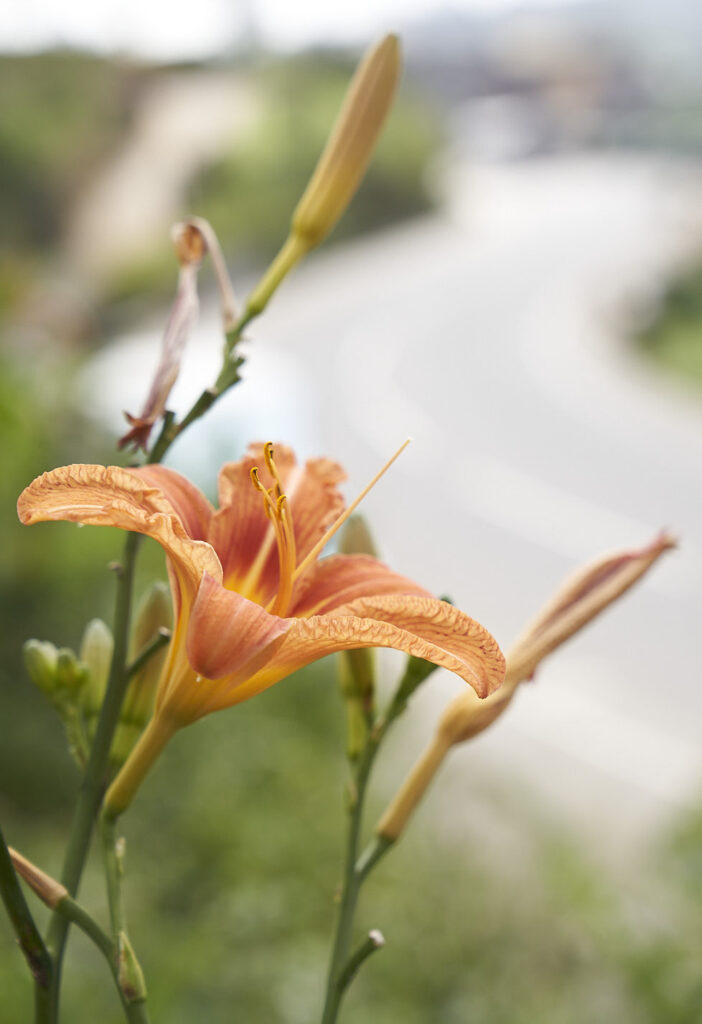
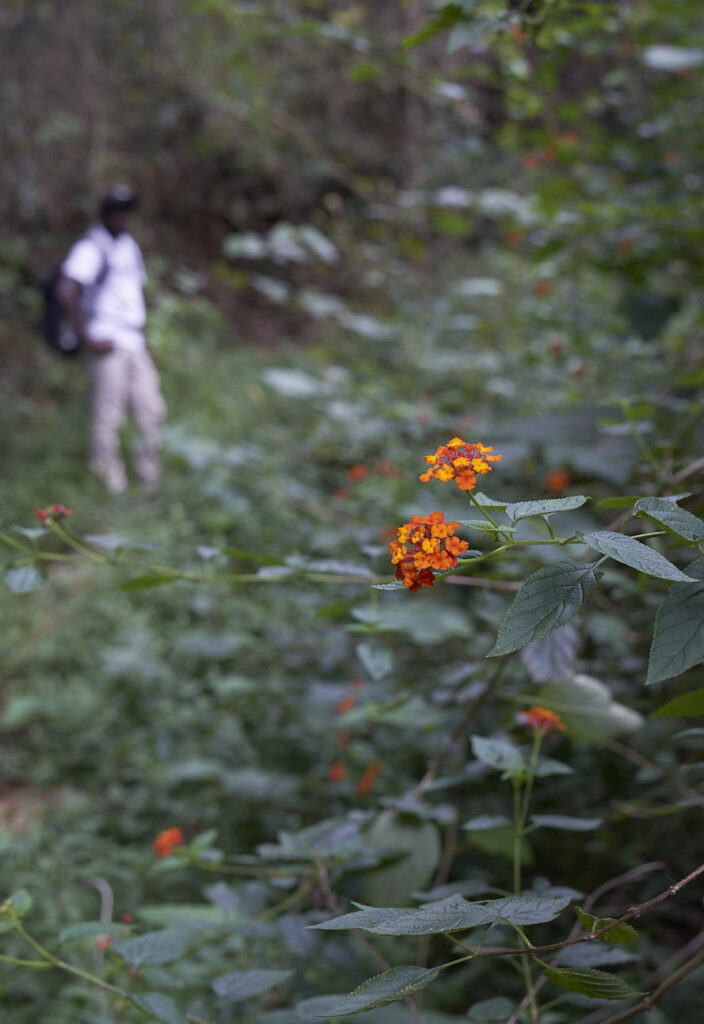
Most of the Sri Lankan tea plantation workers are Tamils who immigrated to Sri Lanka from the South of India. They are Hindu and this is why you will see a lot of Hindu temples in the tea growing regions of the island. Dusha is already the 3rd generation settled in here, he says “I’m a Sri Lankan at heart.”
He also says that the companies who own tea plantations are reluctant to invest in infrastructure and education of the children living at tea estates. They don’t want young people to leave and pursue a different path, but Dhusha had other plans for himself. He acquired qualification as a tour guide and received a licence. Now he works as a freelance tour guide in this area. He is working towards starting his own homestay accommodation one day.
As we walk, we meet ever smiling tea ladies, enjoy stunning views, we take it slow. Dusha often stops for a chat with the tea ladies, asks how their day has been so far and translates it to us. Because Tamil is the common language in these parts not even Aravinda understands. It feels good that we are with Dhuska and can have a short conversation with them.
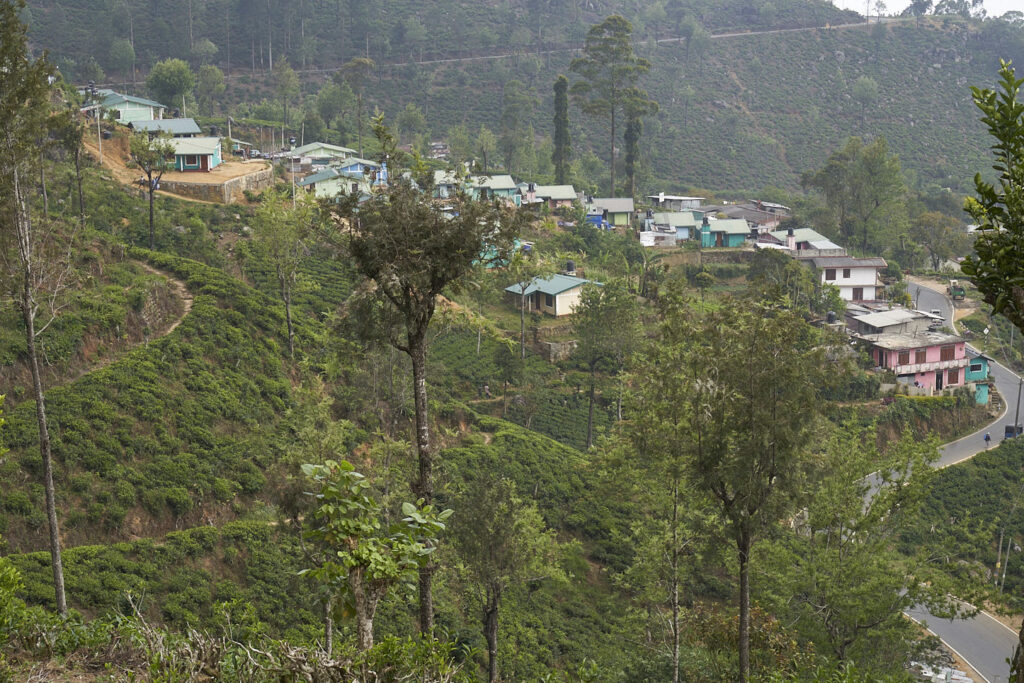

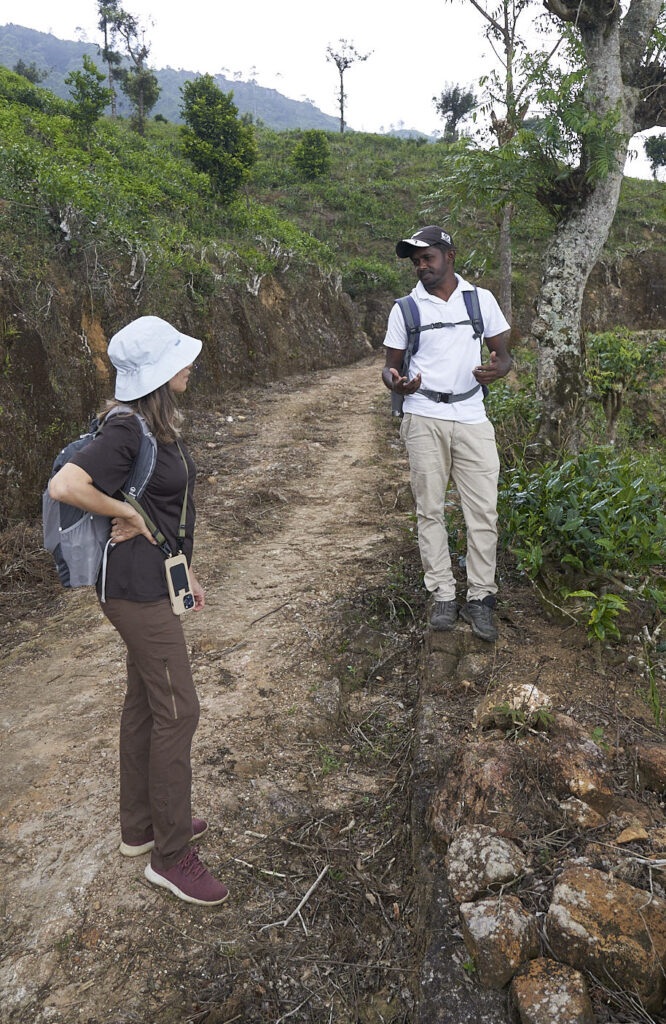
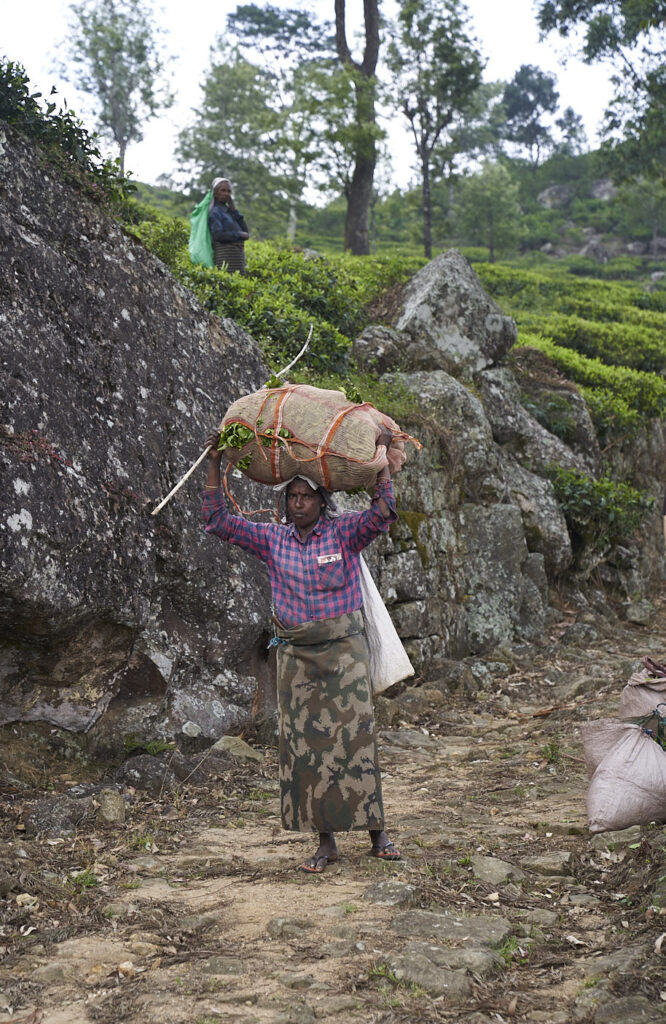

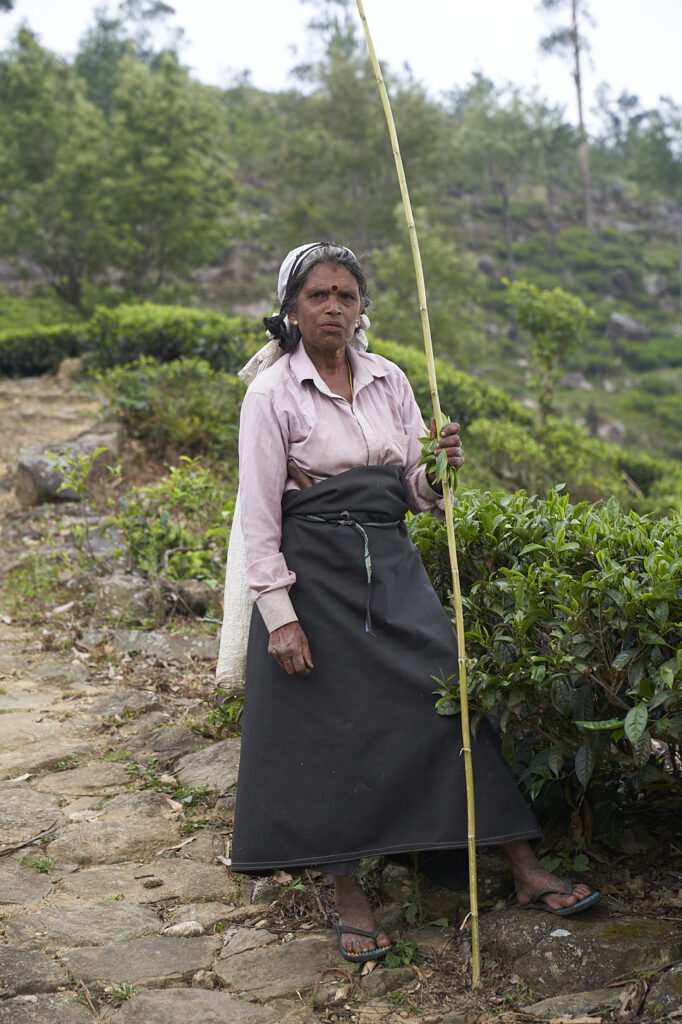

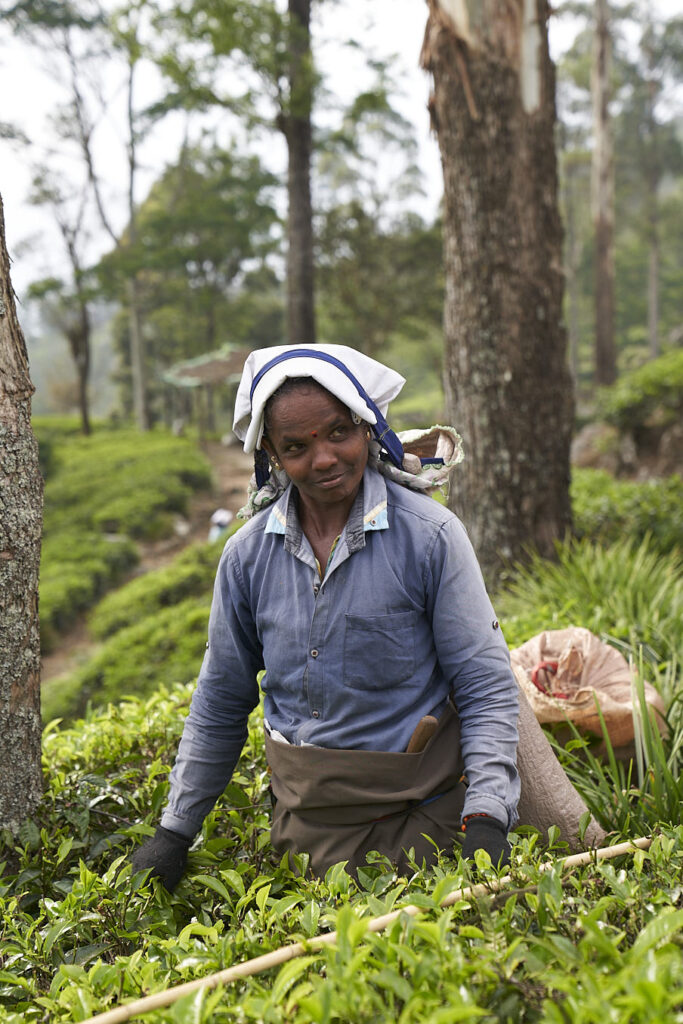
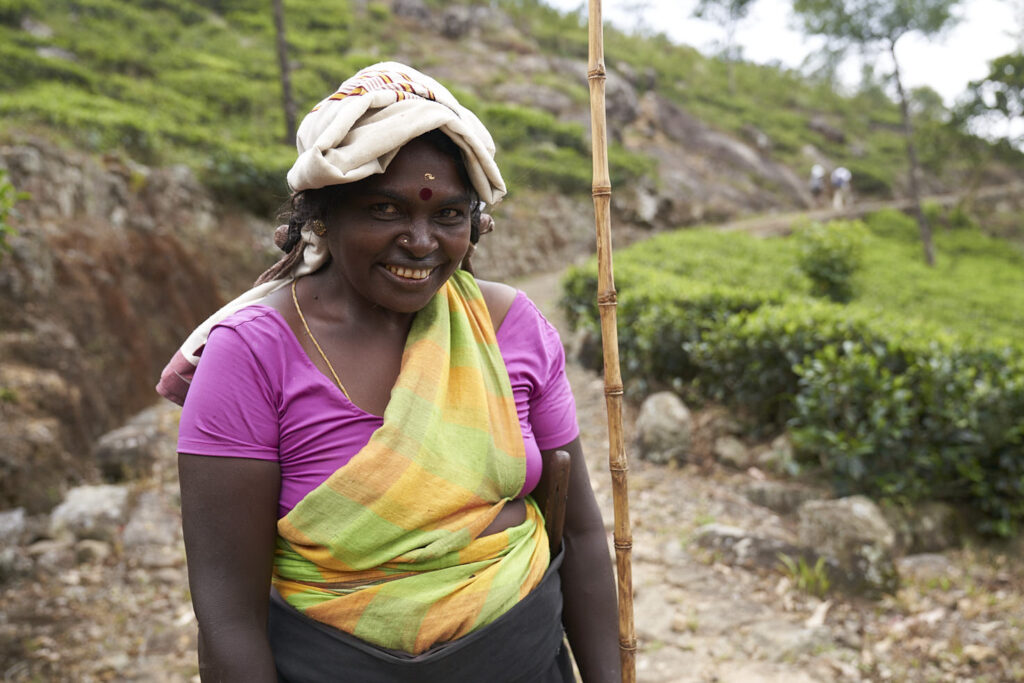

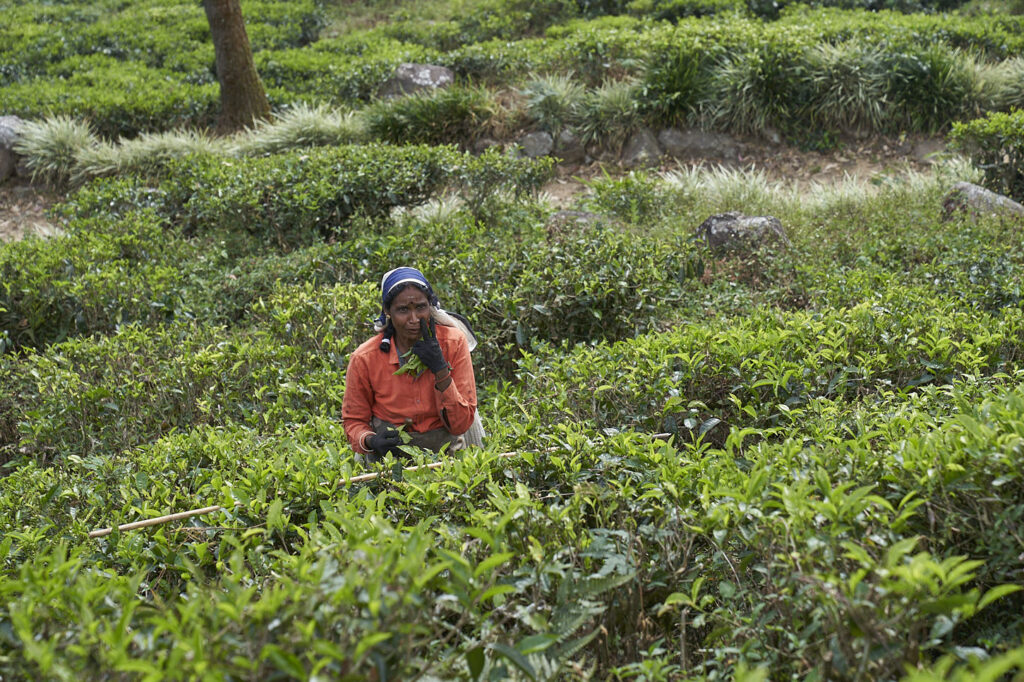
As we kept walking, we were slowly climbing upwards giving us some amazing views of the mountains.
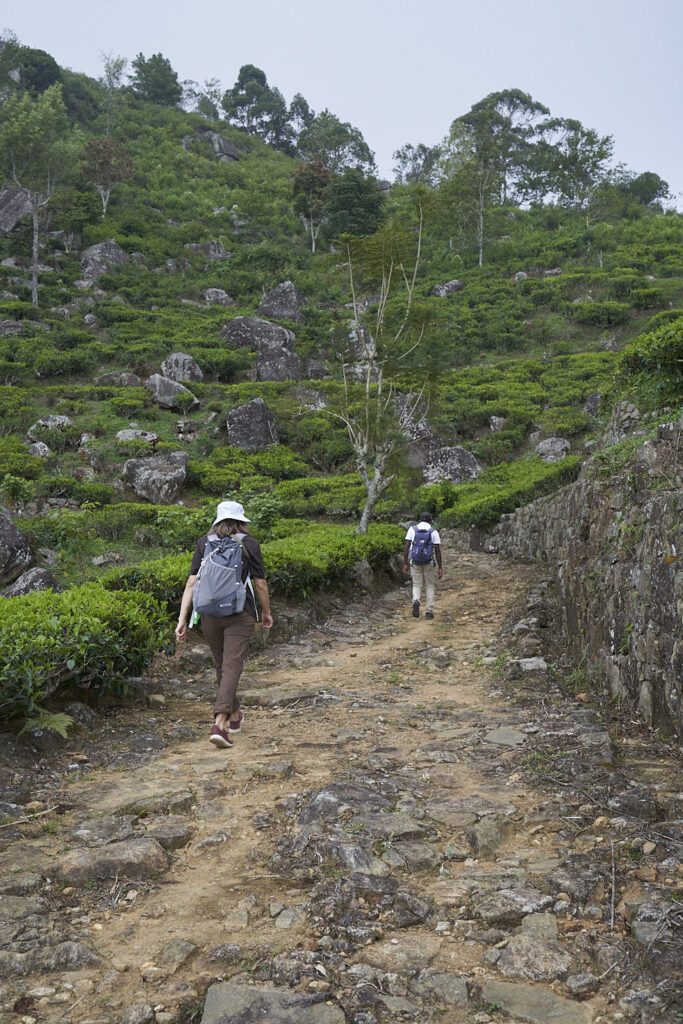
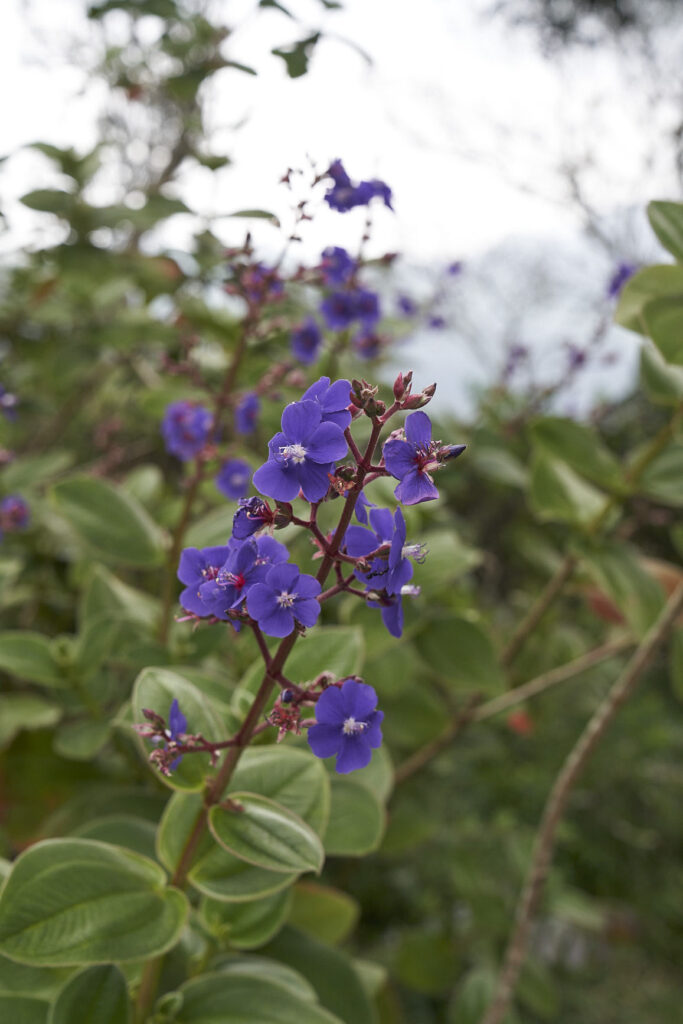

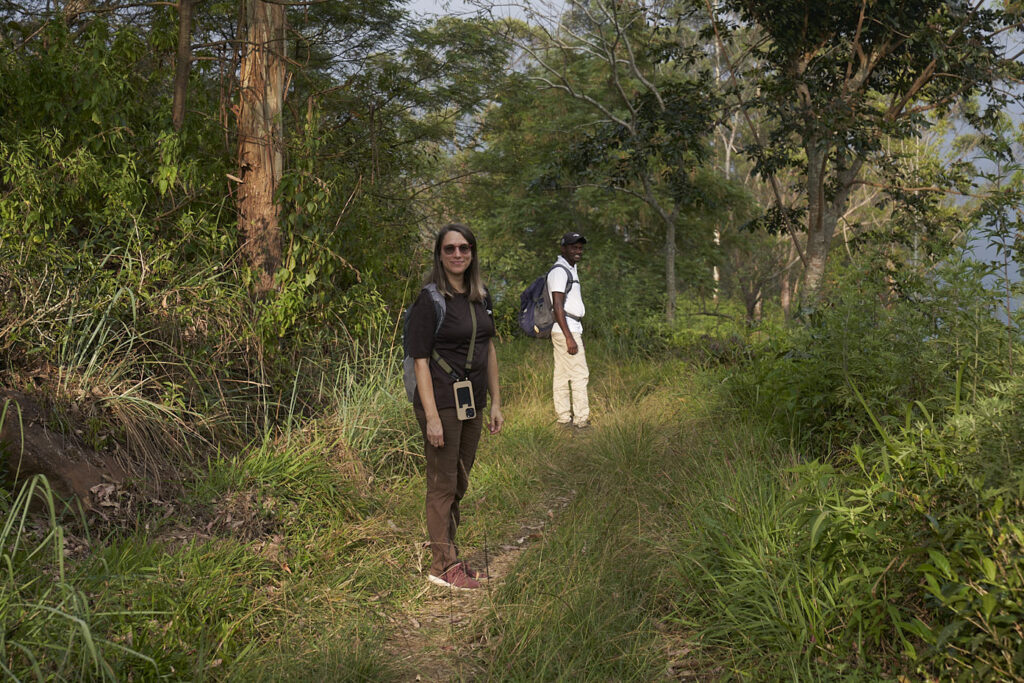
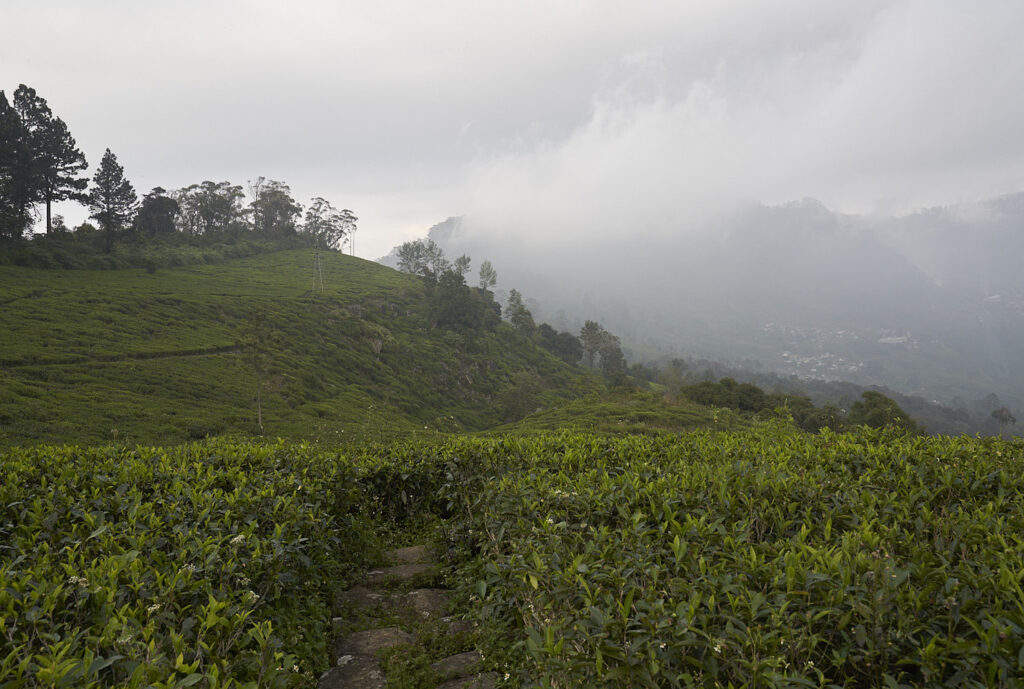
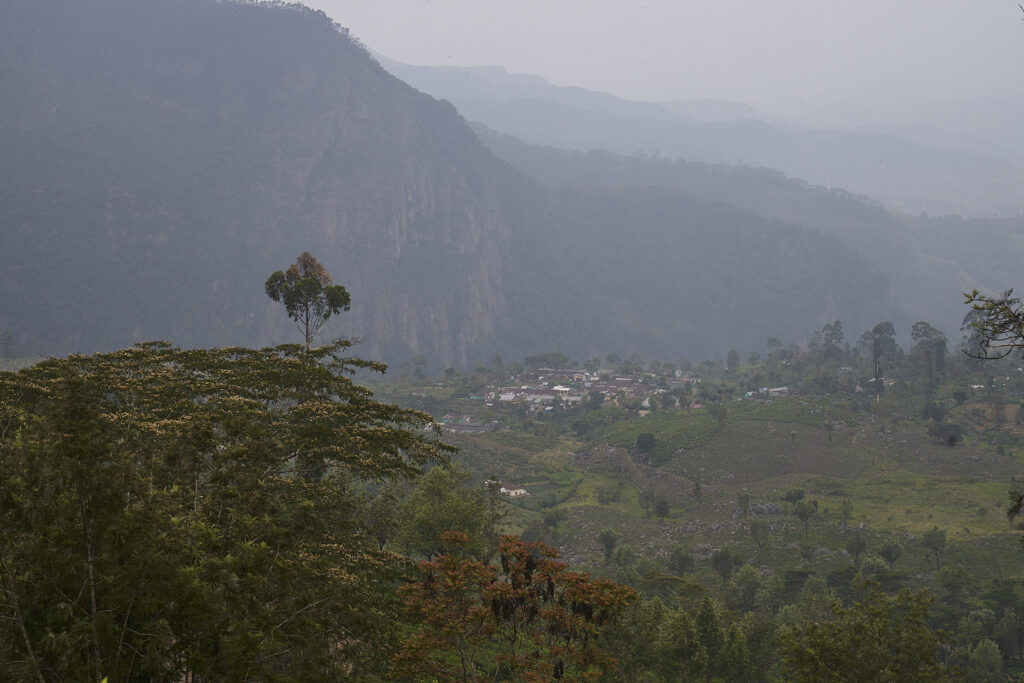

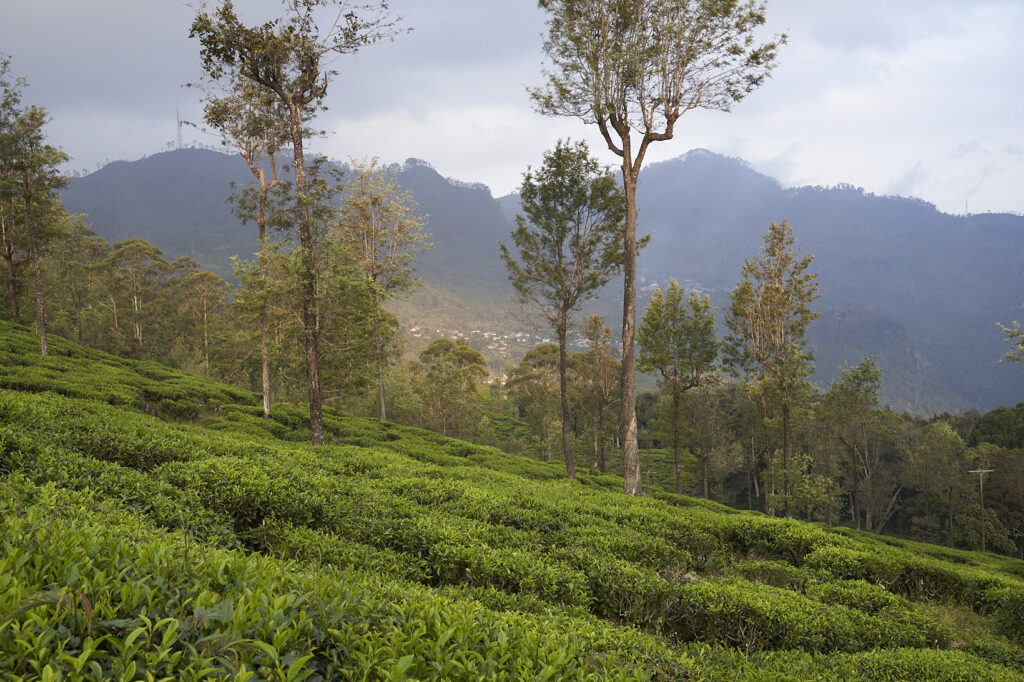

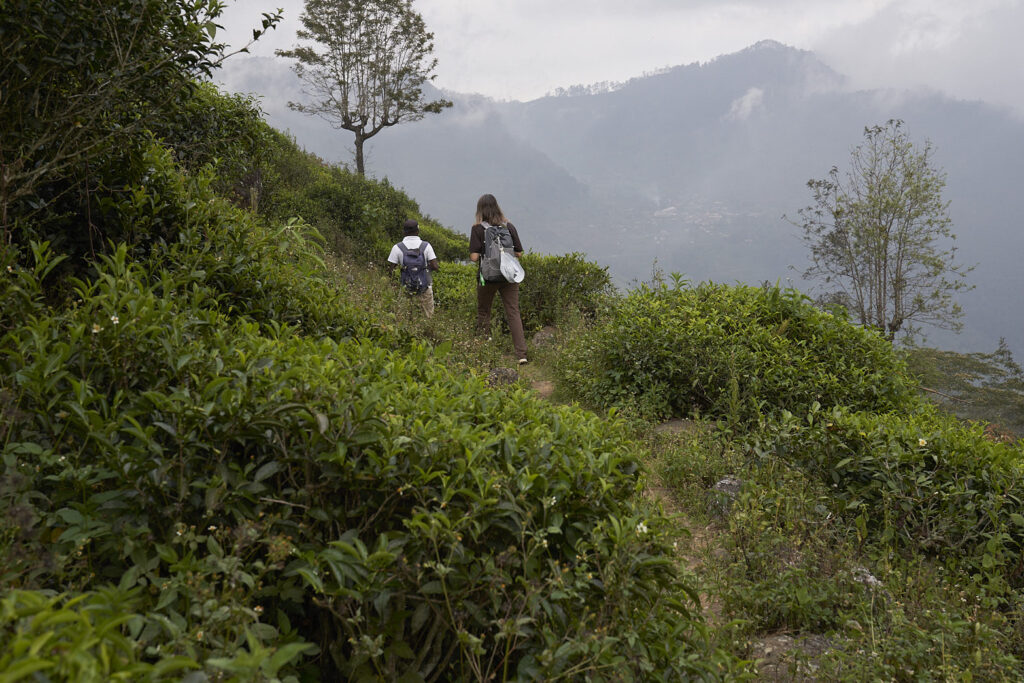

After about 4–5 hours of walking, we reached the endpoint at St. Catherine just as darkness fell. The sun had already set, and a thick mist had settled in. A tuk tuk was waiting for us to take us back to Haputale.


What a beautiful day! It felt like it all went too quickly.
For More Info Visit: https://www.thepekoetrailsrilanka.com/pekoe-stages/stage-13/
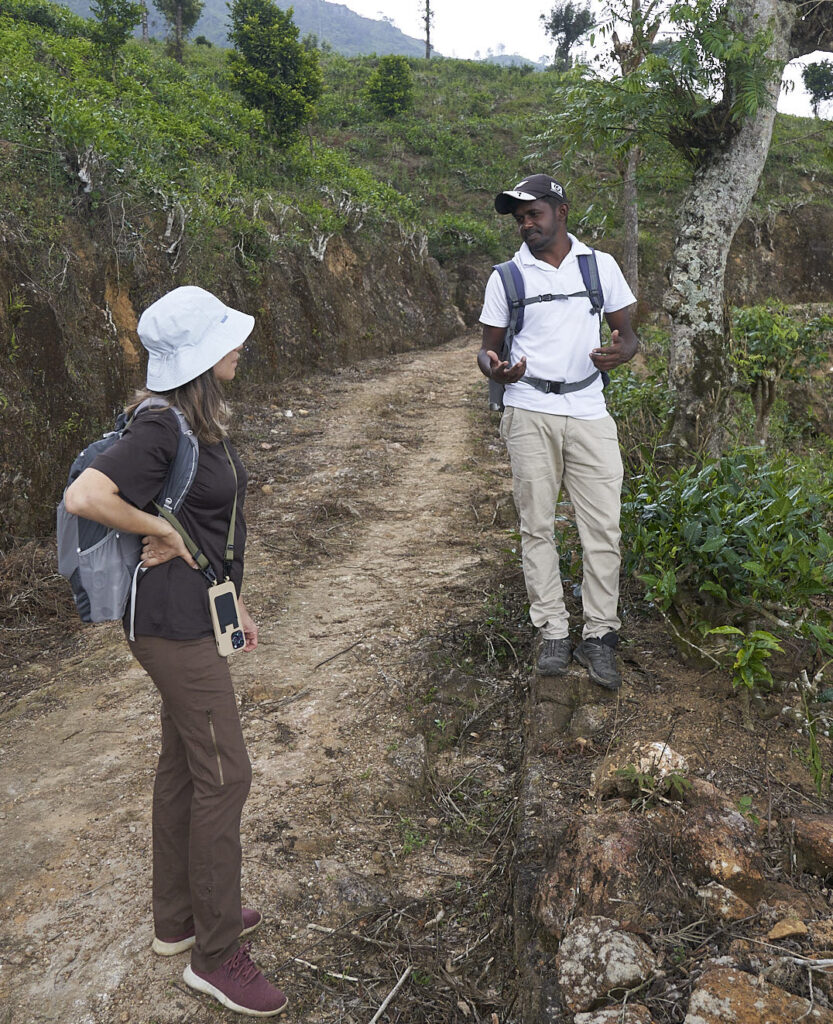
What we would do differently next time:
We would take a tuk-tuk to the top first and then walk our way down. This way it can be easier for people who are physically less agile and also it could be lovely to get to the top during earlier hours of the day so you can enjoy the view from there. We didn’t get to see it as it was already dark and rainy when we reached it.
Second day of our walk: Pekoe Trail Stage 12 – Udaweriya to Haputale
Next morning we drive to Ohiya. We are staying at Icy Falls which is located in Ohiya, 10Km away from Horton Plains. All rooms here have views of the mountains and a beautiful sunrise. We start the walk after we check in and enjoy our tea at Icy Falls. This stage of the Pekoe trail begins in the remote Udaweriya Valley:
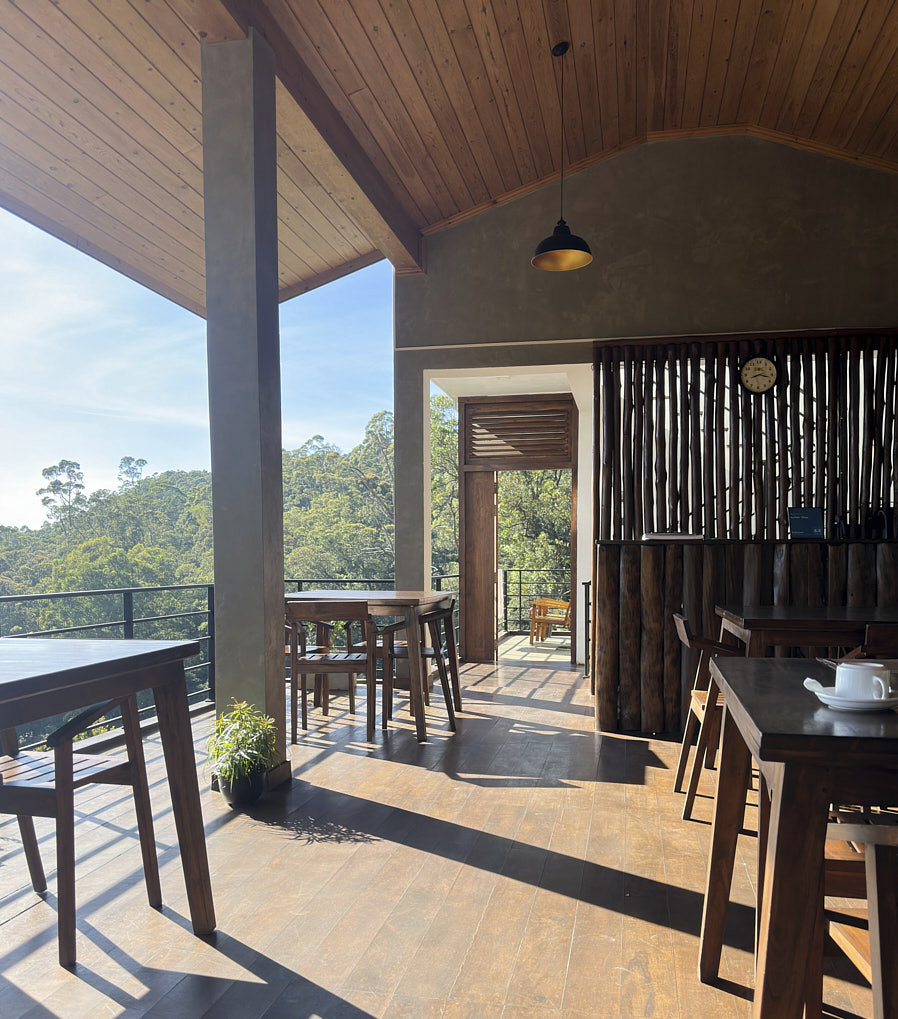
ICY FALLS, OHIYA
Located Ohiya,
15 km from Horton Plains
This area is far more remote than Haputale, with less population and tea plantations, and more forests. Dusha tells us that the children in these areas tend to drop off school earlier and start families earlier than in the Haputale area, indicating how undeveloped this area is compared to Haputale.
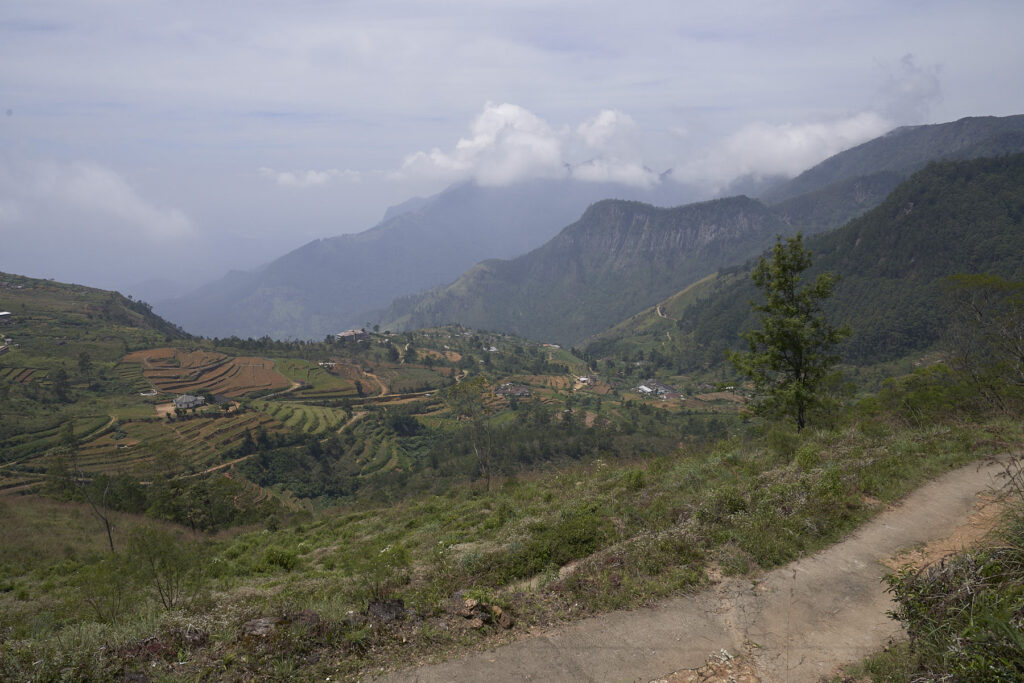
Sri Lanka’s tea plantations, especially those in high-elevation areas like Haputale, are vulnerable to landslides—particularly during periods of heavy rainfall. As a result of these frequent landslides, some tea estates have been abandoned, and we are now walking through one such deserted estate. The local people, who once worked on the estate, have since turned to subsistence vegetable farming to make a living.
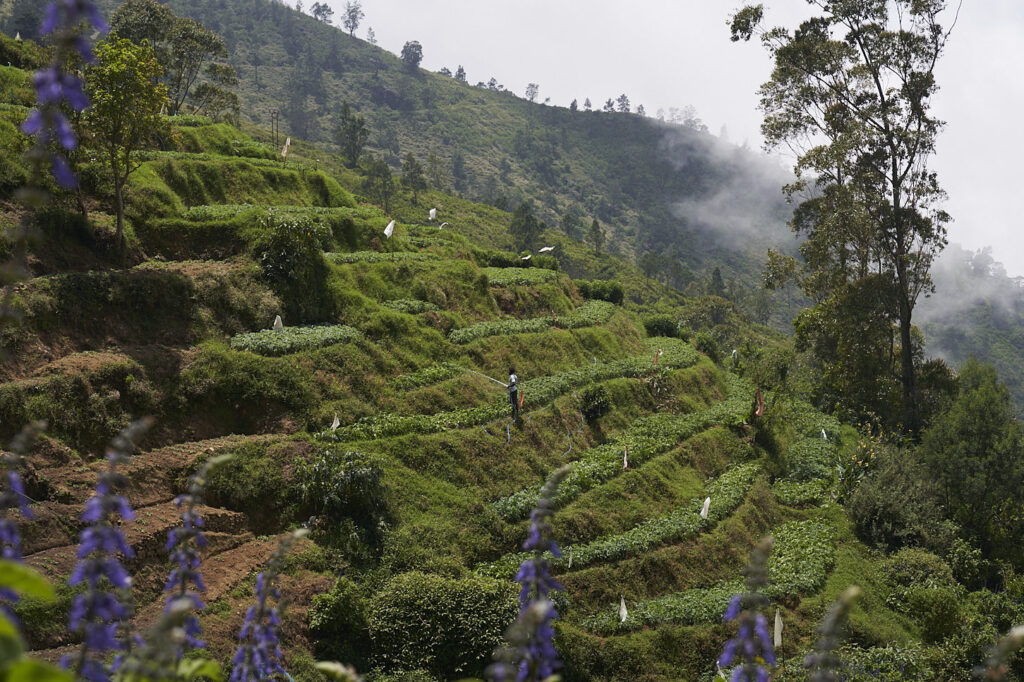
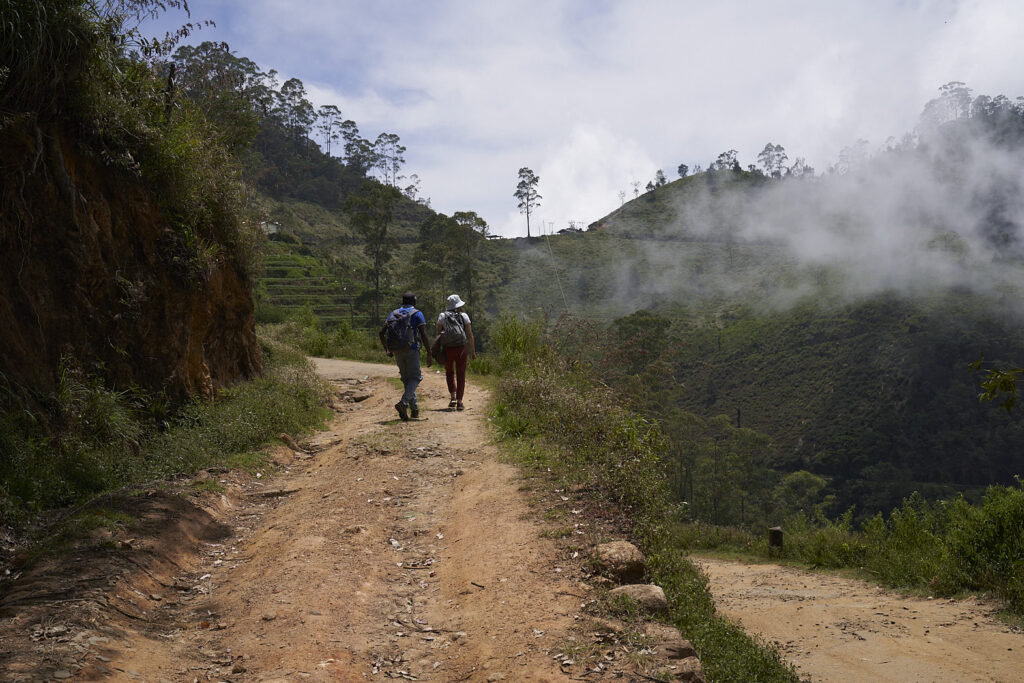
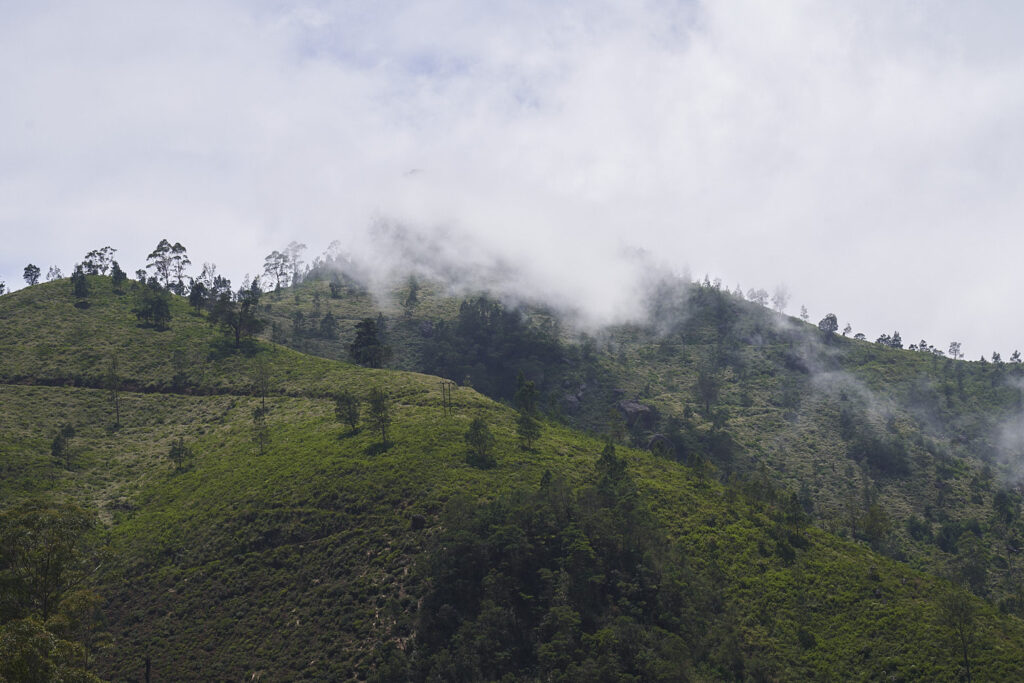
Only about an half an hour into our walk we reach a small village where tea estate workers live. We notice a group of women and girls in front of their house looking in our direction and whispering something to their small children. As we come closer, the small ones approach me with flowers. What a sweet way to welcome a foreigner! We wish we had some pencils or small gifts for these children, but unfortunately we weren’t prepared. Dhusha tells us that it’s no good to give money as they get used to ‘easy earnings’ and then they don’t focus on studying which could in fact really improve their lives.
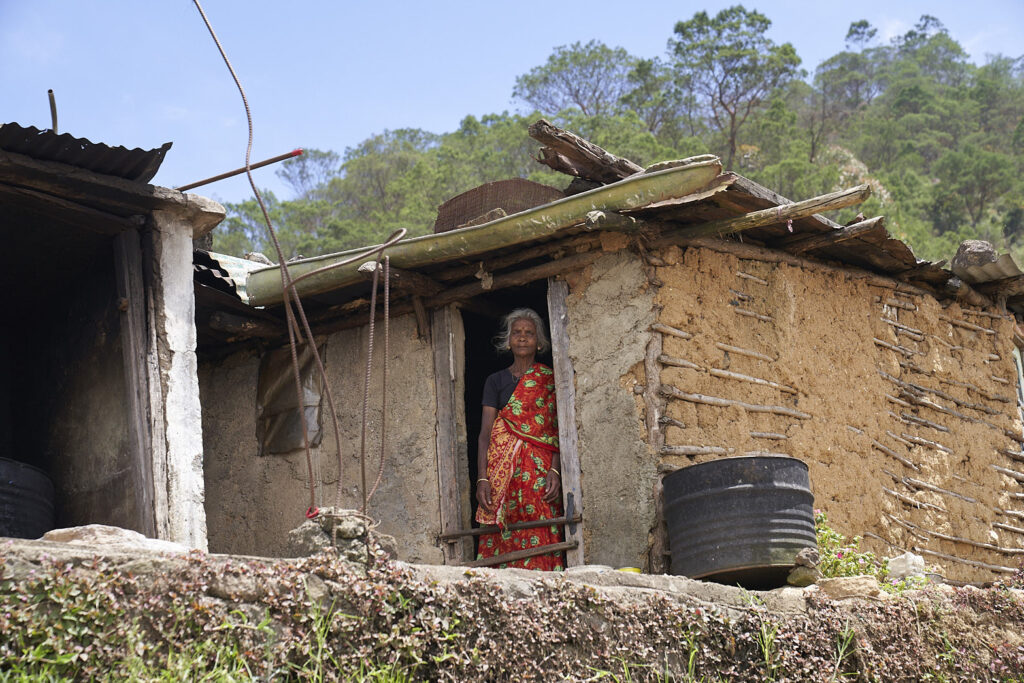


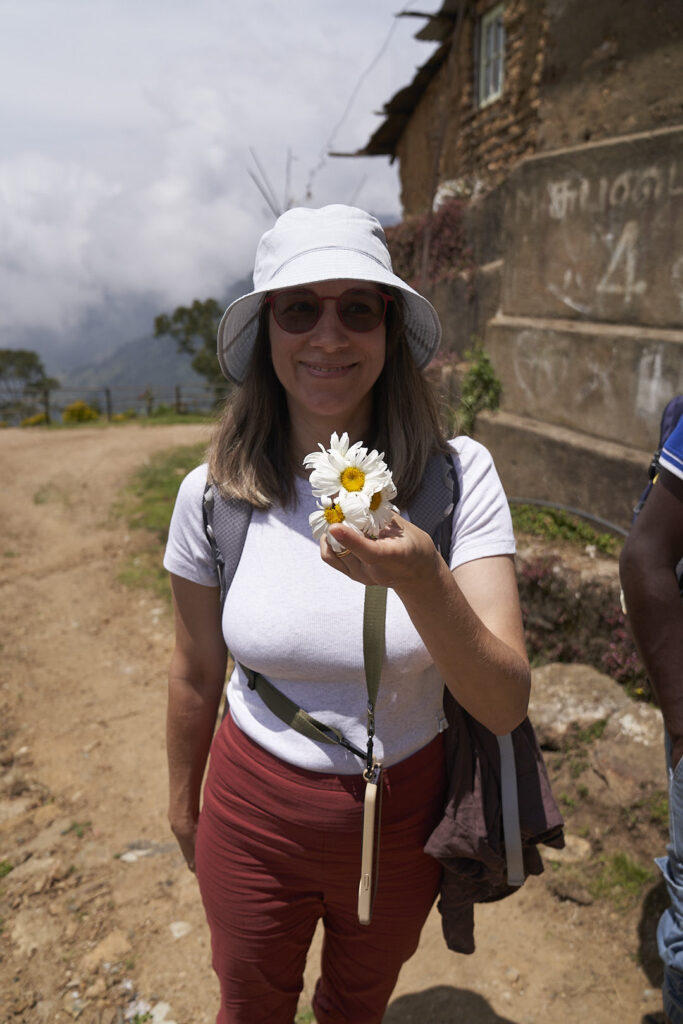
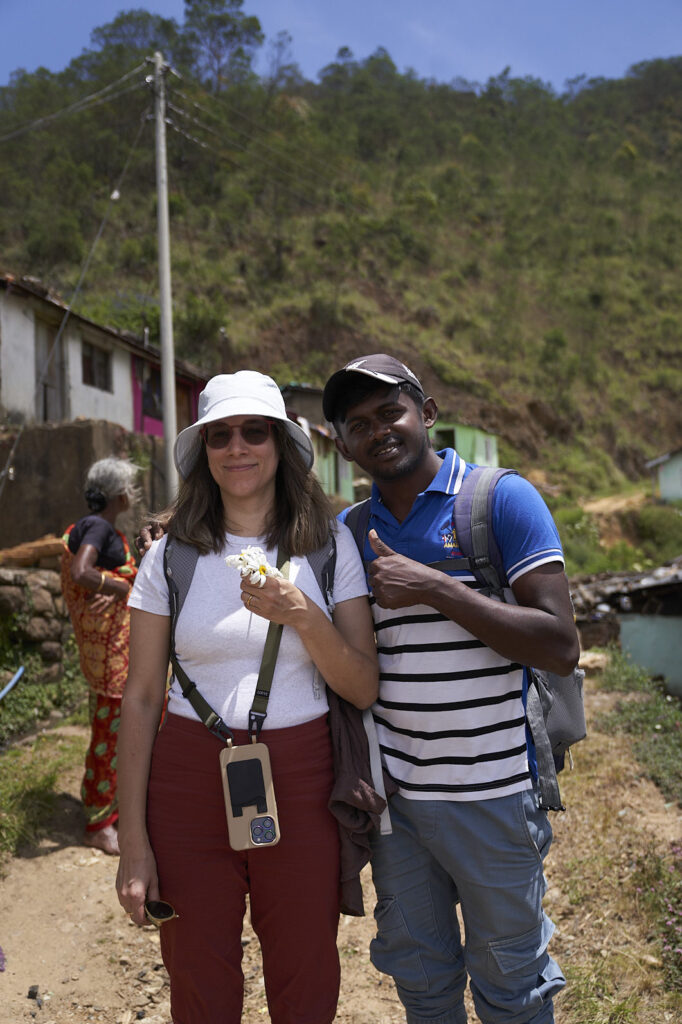

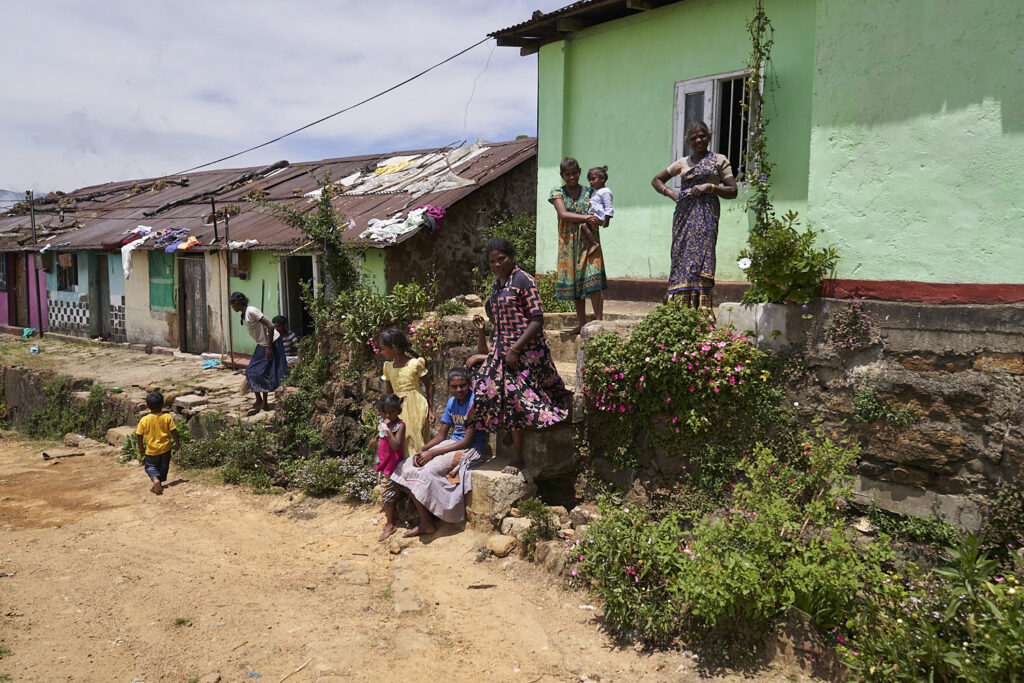
These houses, where tea estate workers live, are known as “line houses” due to their long, narrow rows of attached dwellings. Originally built during the British colonial period, they are a common sight throughout tea estates in Sri Lanka. This particular line house village is located in a high-wind area, which is why you’ll see branches, tyres, and other heavy objects placed on the roofs—to keep them from being blown away. Dhusha explains to us.
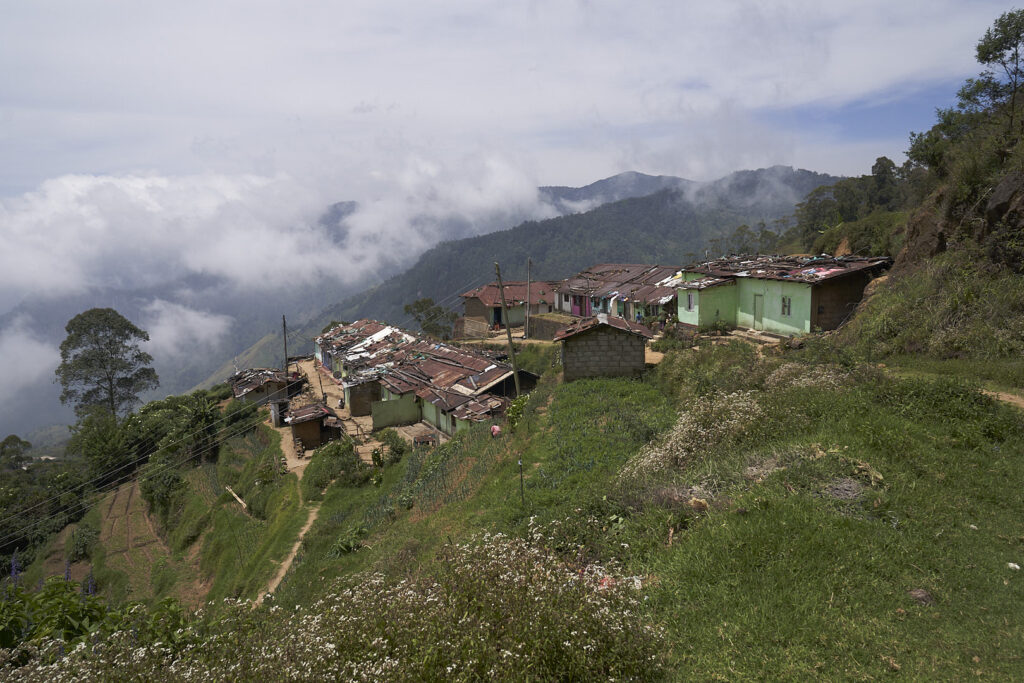
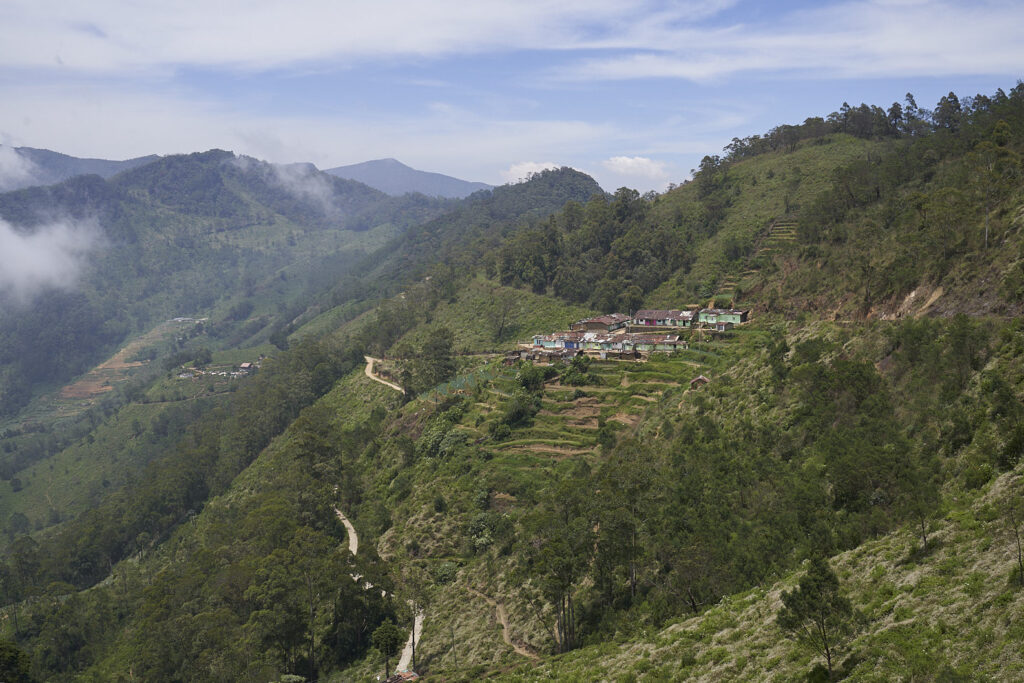
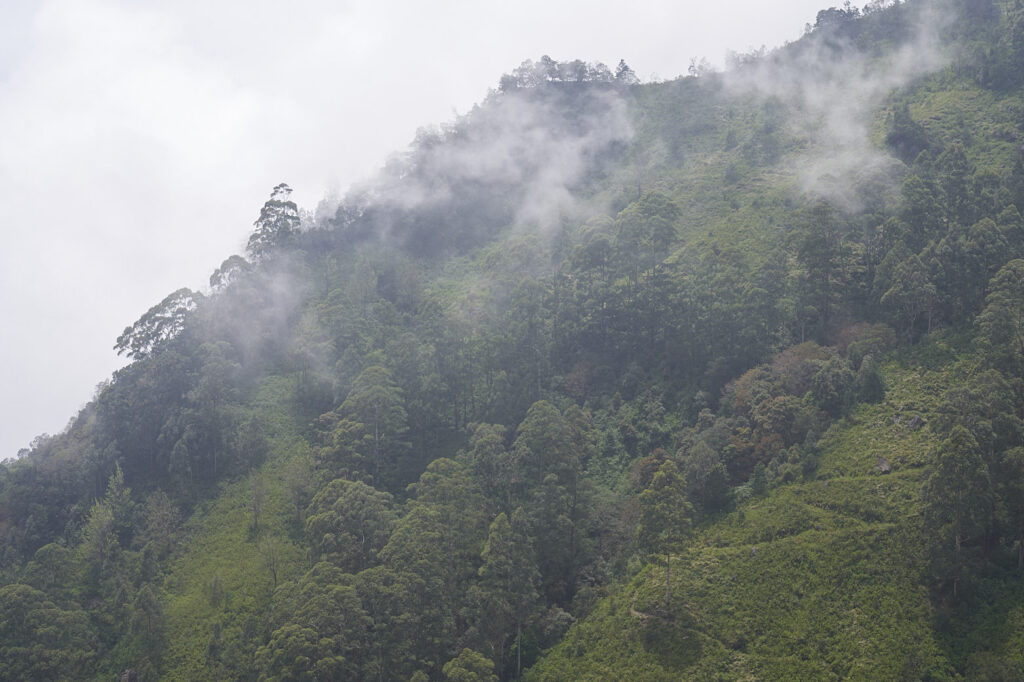
Dhusha is well prepared for our walk. He brings tea and some refreshment for us to enjoy. We admit there is nothing more refreshing than a cup of hot tea right at the heart of the tea country. With every sip you take you surely need to appreciate the hard work tea pluckers do.
“These people wake up very early each morning whether they like it or not and walk through the tea plantations, often bare foot or wearing flip flops, carrying huge baskets and heavy bags of emerald green tea leaves for you to enjoy on the other side of the planet. Despite the hard work they do, they smile. Their smiles are moments we will never forget.”
The views on this walk were especially impressive and you really feel very far away from everything you know. Unfortunately, due to the time limitations we faced at that time, we didn’t finish this walk and had to return sooner.
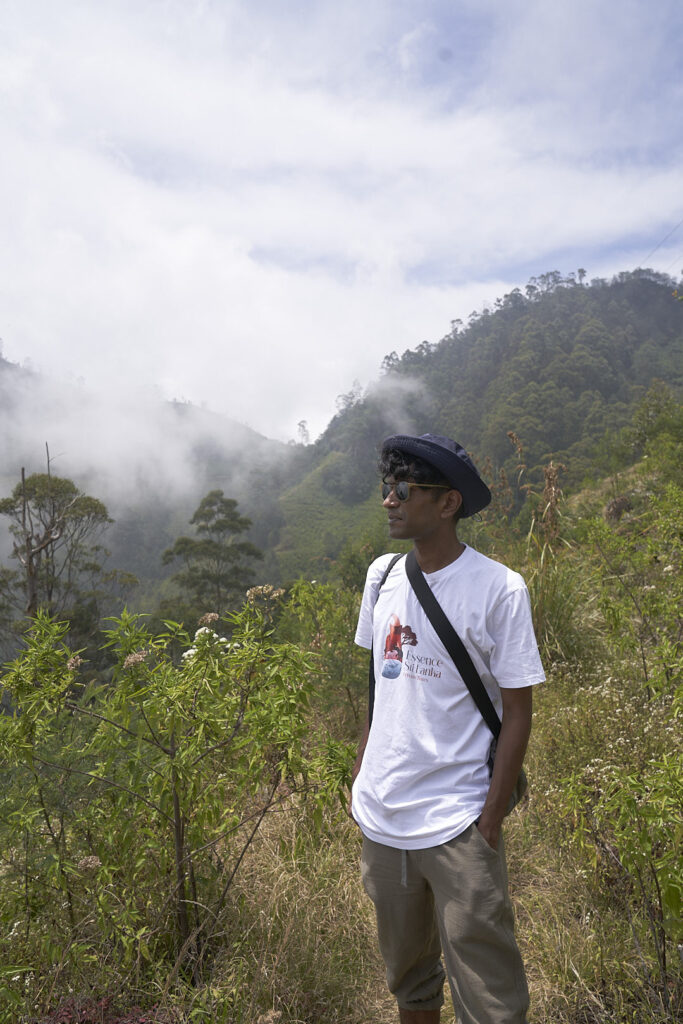
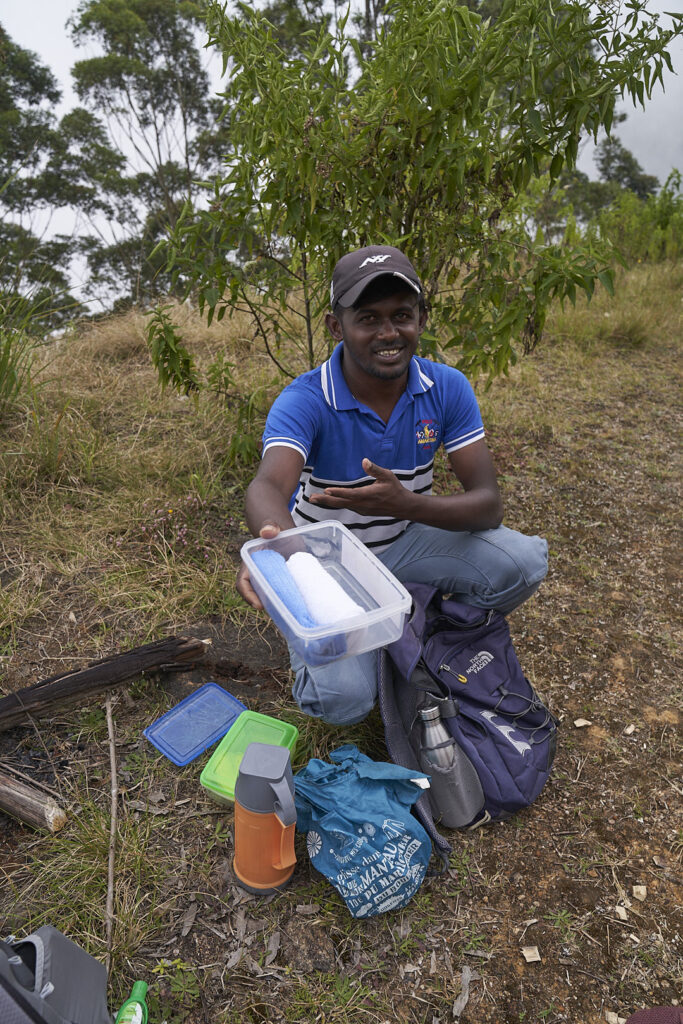
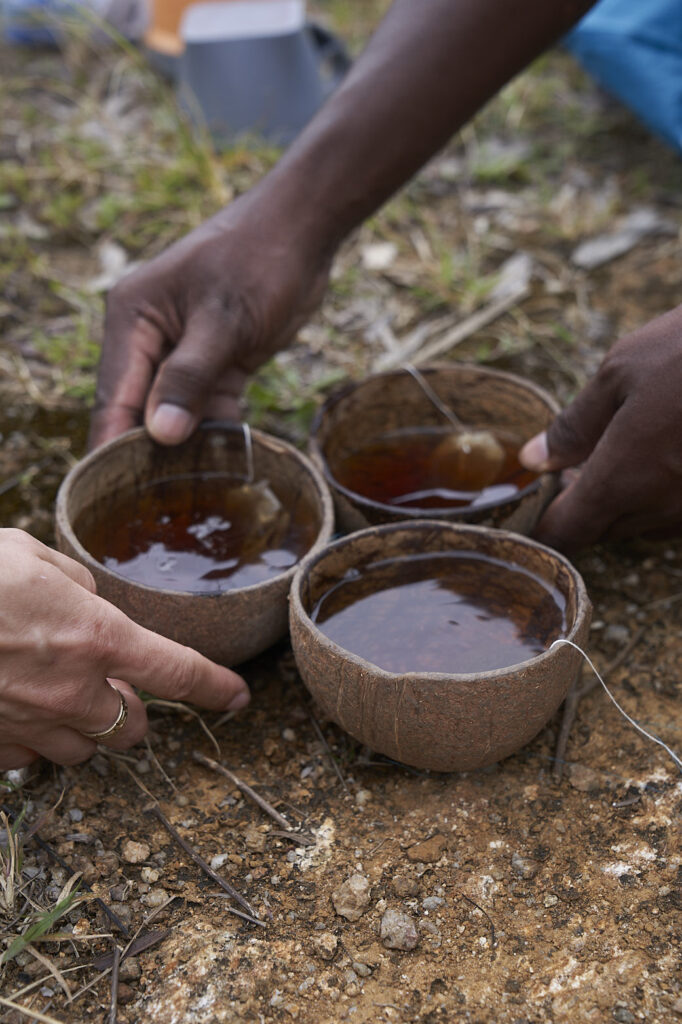
For More Info Visit: https://www.thepekoetrailsrilanka.com/pekoe-stages/stage-12/
Before we leave Haputale to go back to Colombo we say goodbye to Dhusha and his father, two sisters Kavitha and Lalitha and their baby girl Jahanavi. Their husbands are at work so we couldn’t capture a photo with them.
We would highly recommend the Pekoe Trail with a local for everyone who loves to hike and take travels slowly. You will see places you might not even hear about online or experience if you travel via major group tours. You will definitely not experience them in the same way if you go without a local to show you around.
